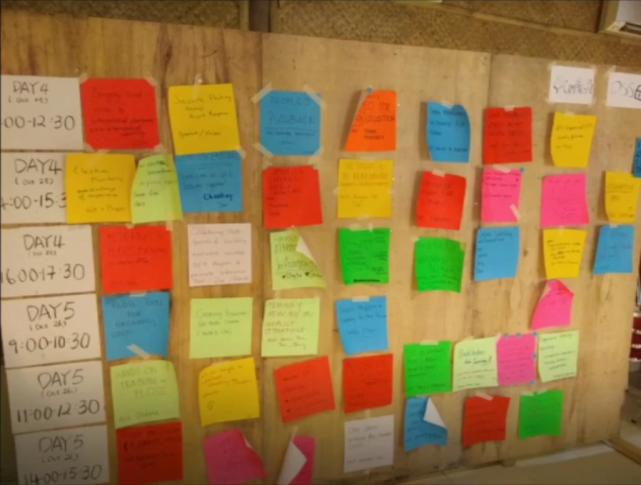
The COCONET Southeast Asia Digital Rights Camp 2017 was held in Yogyakarta, Indonesia on 22-26 October, organised by EngageMedia with the support of APC and the Southeast Asian Press Alliance (SEAPA). The camp mainly focused on interactive learning and longer-term network building. Most of the agenda relied on participants hosting sessions and discussions. More than 100 participants from different countries joined this camp.
Each day in the morning we gathered together in the assembly room, and here we discussed specific themes, skill-sharing sessions, tech demos, project presentations and other creative exercises related to digital rights issues. Then afterwards we divided into different open-space sessions according to our interests. All sessions were organised with participatory methodology.
I was especially interested in the sessions on new media and tech tools, video and technology for human rights documentation, and video evidence for journalism.
The new media and tech tools session was presented by Arul Prakkash from Witness, Malaysia. In this session we learned about many kinds of new tools which we can use easily in our workplace and daily life. For example, we learned how to retrieve geo-location data from images. Photos taken with a mobile phone or digital camera contain metadata called Exif data which includes information about the camera, such as brand and model name, and when available, GPS coordinates which reveal the location where the picture was taken. Arul provided us with links to websites that can be used to read and remove Exif data for security purposes, including https://readexifdata.com and https://www.verexif.com/en.
The session on video and technology for human rights documentation was jointly delivered by Prakash and Yerry Borang from EngageMedia. In this session they explained how activists, journalists and human rights advocates can maximise the benefits of using video and technology. Today there are many kinds of tools and apps for smartphone or tablet to capture and share verifiable photos and videos.
CameraV is one of the best ways to capture and share verifiable photo and video evidence on a smartphone or tablet, while keeping it entirely secure and private. The CameraV app, developed by the Guardian Project, is easy to learn and simple to use. All photos and videos taken are password-protected and 100% encrypted on the device.
ObscuraCam is another app developed by the Guardian project which makes it possible to share photos and videos while protecting our own privacy and the privacy of others. It can be used to blur and disguise faces in photos and videos, and information that could identify us as the camera person is removed from the files for added security. Both of these apps are free/libre and open-source tools.
The video evidence for journalism session taught us that journalists can use video clips as evidence. This could be more effective than photos or write-ups. Through this session I learned the technique to record videos in such a way that nobody could notice. One of our journalist friends from Papua described how to use video as evidence through his real life story.
I am very glad that I got this opportunity to join the COCONET Southeast Asia Digital Rights Camp 2017. It was really a very good platform to communicate and collaborate with others to share and learn about digital rights issues. All the participants at this camp were just amazing, and the organisers were very friendly and helpful. Besides the learning sessions, there was lots of scope for fun and entertainment which helped me to build a relationship with each participant.
Toufikul attended COCONET with the support of a grant from the APC Member Exchange and Travel Fund (METF).